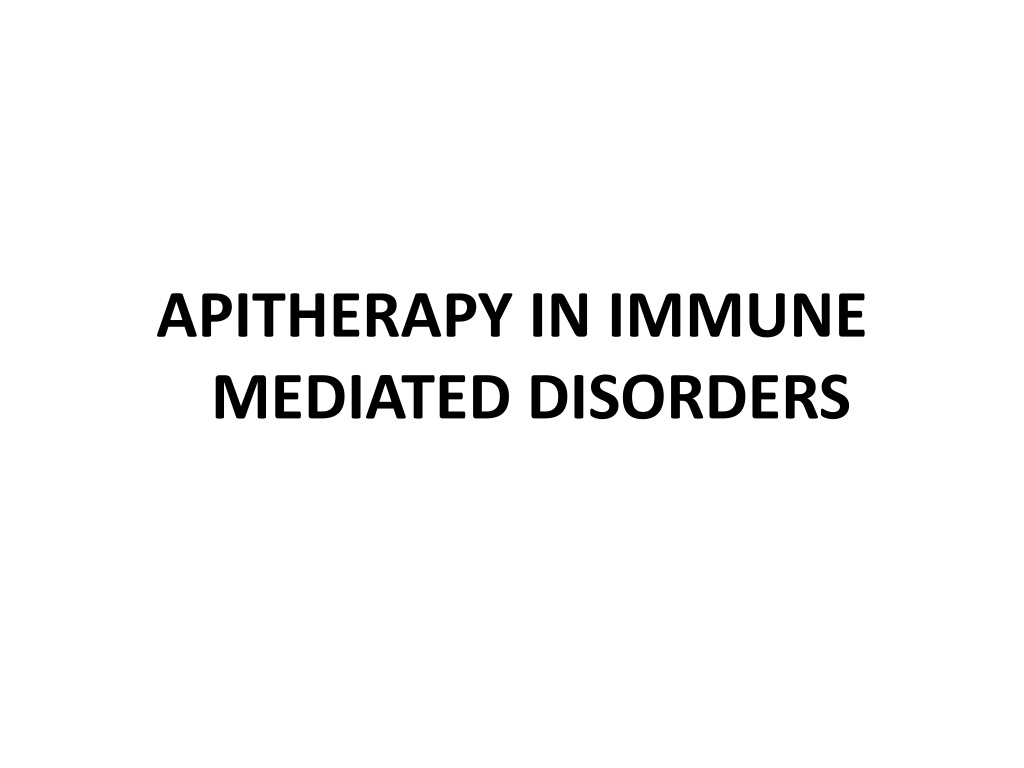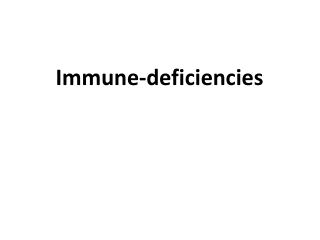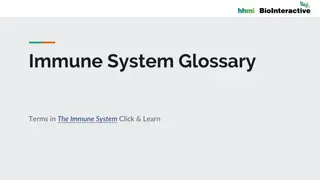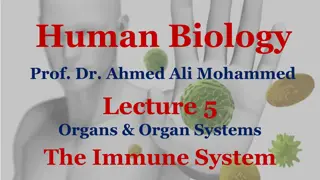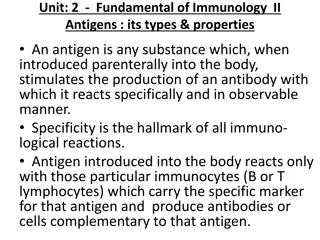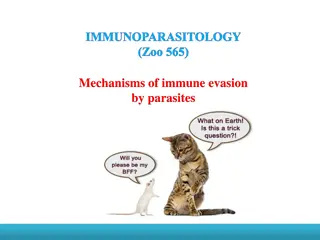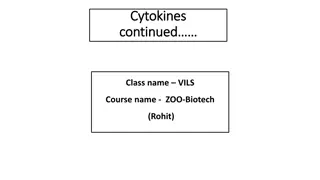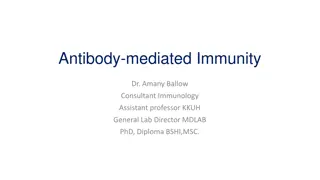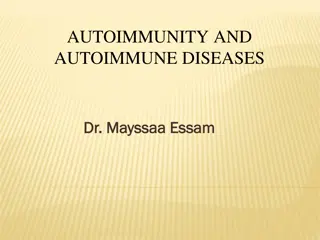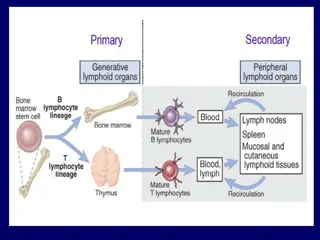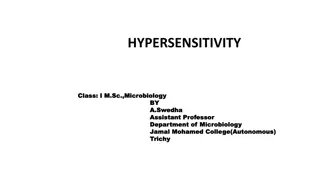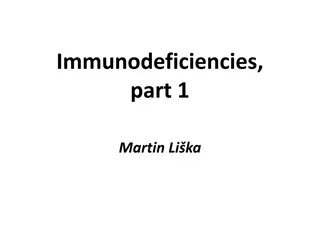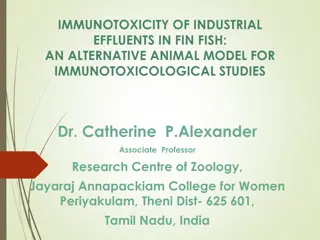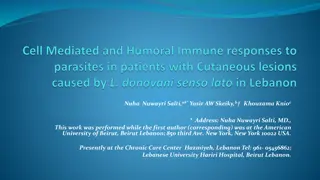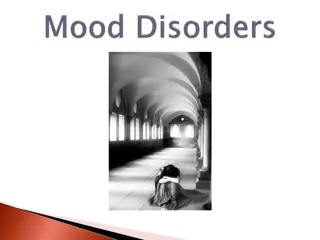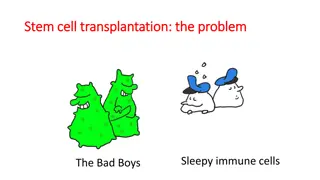Understanding Apitherapy in Immune-Mediated Disorders
Apitherapy, the medical use of honeybee products, holds a rich history dating back to ancient civilizations like Egypt and Greece. It encompasses various bee-derived substances such as bee venom, honey, royal jelly, propolis, and beeswax, offering a holistic approach to healing immune-mediated disorders. This therapy, pioneered by figures like Hippocrates and modernized by physicians like Phillip Terc, showcases a deep-rooted connection between bee products and human health, as even referenced in the Holy Quran. Apitherapy goes beyond bee sting therapy, incorporating a blend of hive products combined with essential oils tailored to specific conditions being treated.
Download Presentation

Please find below an Image/Link to download the presentation.
The content on the website is provided AS IS for your information and personal use only. It may not be sold, licensed, or shared on other websites without obtaining consent from the author. Download presentation by click this link. If you encounter any issues during the download, it is possible that the publisher has removed the file from their server.
E N D
Presentation Transcript
APITHERAPY IN IMMUNE MEDIATED DISORDERS
BY EHAB AHMED KAMAL LECTURER OF COMPLEMENTRY MEDICINE NATIONAL RESEARCH CENTRE GIZA - EGYPT CONSULTANT OF GASTROENTROLOGY AND HEPATOLOGY
APITHERAPY, or bee therapy (from the Latin apis which means bee) is the medical use of products made by honeybees. Products of the Honeybee include : Bee venom, Honey, Pollen, Royal jelly, Propolis, Beeswax.
It is important to note that Apitherapy is not only the use of the venom for healing, often called BEE STING THERAPY, but the use of all the hive products, and usually a combination of them. These products are also sometimes mixed with other ingredients, specifically different essential oils, dependent on the condition being treated.
The exact place and pattern of origin of apitherapy is not clear. History of apitherapy can be traced back to ancient Egypt, Greece, and China (Hegazi, 1998) Even Hippocrates, the great Greek physician renowned as the "father of medicine," used bee venom to treat joint pain and arthritis. Ancient Greeks athletes used honey to boost an energy. (Broffman, 1999).
The modern systematic study of apitherapy was initiated through the efforts of the Austrian physician PHILLIP TERC. He published the results of intentional bee sting and bee in his article "Report about a Peculiar Connection Between Rheumatism" in 1888. the Beestings and
The holly Quran 1400 years ago mentioned that the bee products contain cure to people. Wherein is healing for people Al Nahl :69
Active components of apitherapy 1-Peptide constituents
Mast cell degranulating (MCD) peptideMCD peptide, also known as peptide 401, a bee venom polypeptide with 22 amino acids and constituting 2 3% of dry bee venom. It was originally named due to its biological action of causing release of histamine from mast cells (Banks et al., 1990).
Another polypeptide of 18 amino acids comprising 2 3% of dry bee venom. important bee venom neurotoxic It possesses a selective inhibitory action on calcium- dependent potassium channels that are involved in regulation of the after-hyperpolarization period and frequency of action potential generation in the central nervous system (CNS) (Hugues et al., 1982).
Afterhyperpolarization, describes the phase of a neuron's action potential cell's membrane potential normal resting potential. where below the the falls This is also commonly referred to as an action potential's undershoot phase (M. Shah, and D. G. Haylett, 2000).
A strongly basic 26 amino-acid polypeptide which constitutes 40 60% of the whole dry honeybee venom. It has various biological, pharmacological and toxicological actions including activity on cell lipid membranes, hemolyzing activity, antibacterial and antifungal activities (Lariviere and Melzack, 1996). strong surface
The cytotoxic effect through the activation of PLA2 by melittin is believed to be an important mechanism of anti-cancer activity of BV. Several cancer cells, including renal, lung, liver, prostate, bladder, and mammary cancer cells as well as leukemia cells, can be targets of melittin (Moon et al., 2006).
The induction of apoptotic cell death through several cancer cell death mechanisms, including the activation of caspase and matrix metalloproteinases (MMP), is important for the melittin-induced anti- cancer effects (Holle et al., 2003). The binding of the cell lytic peptide (melittin) to the hormone receptors as well as gene therapy carrying melittin can be useful as a novel targeted treatment for some types of cancer, such as prostate and breast cancers (Li et al., 2004).
Recently, Melittin has also been demonstrated to cause neural plastic changes along pain-signaling pathways by activation nociceptor cells via phosphorylation of mitogen- activated protein kinases (MAPK) (Hao et al., 2008;Yu et al., 2009). The effect of mellitin was studied in animal models with amyotrophic lateral sclerosis (ALS) it was found that administering microglial activity and the expression of the pro- inflammatory factor TNF- (Yang EJ., et al 2010). and sensitization of melittin decreased
ADOLAPIN, a basic polypeptide with 103 amino acids residues and comprising 1% of dry bee venom, it has been shown to have anti-nociceptive decreasing pain sensation anti-inflammatory and antipyretic effects (Koburova et al., 1984,1985). Adolapin can inhibit prostaglandin synthesis via inhibition of cyclooxygenase activity (Shkenderov and Koburova, 1982).
PLA2, which constitutes 1012% of dry bee venom, has inflammatory and nociceptive effects (Landucci et al., 2000). PLA2 is a membrane-associated phospholipid converting enzyme that is important in the production of arachidonic acid, which is further metabolized to protaglandins by cyclooxygenase and to leukotrienes by lipoxygenase (Landucci et al., 2000).
PLA2 exhibits complex interactions with melittin that can result in potentiation of secretory PLA2 effects or in inhibition peptide/phospholipid ratio 2003). depending (Koumanov et on the al., PLA2 has effects in a range of cells related to nociception including astrocytes and neurons and possibly microglial cells , it is also involved in nerve regeneration (Sun et al., 2004a).
HYALURONIDASE constitutes 1.52% of dry bee venom (Lariviere and Melzack, 1996). Hyaluronidases break down hyaluronic acid in tissues such as in synovial bursa of rheumatoid arthritis patients (Barker et al., 1964). Hyaluronidase in bee venom shares this property with endogenous hyaluronidase (Barker et al., 1963).
In most of the diseases which are considered to benefit from propolis, cellular immune reaction is activated, neopterin levels in body fluids are increased and enhanced tryptophan degradation is observed. Increased amounts of neopterin are produced by human monocytes/macrophages upon stimulation with the cytokine interferon-y (Murr C., et al 2002).
Caffeic acid phenethyl ester )CAPE( is a biologically active component of propolis, a resinous material obtained from bee hives (Girgin et al., 2009). CAPE has several positive effects, including anti- inflammatory, anti-oxidation, anti-cancer, anti- bacterial, anti-viral, immunomodulatory effects (Jung et al., 2008). anti-fungal, and
Song et al., (2008) evaluated the anti-inflammatory effect of CAPE on cultured human middle ear epithelial cells (HMEECs). They suggested that the anti-inflammatory effect of caffeic acid phenethyl ester ( CAPE ) is due to its inhibition of tumor necrosis factor (TNF)-alpha expression and interleukin (IL)-8 production (Song et al., 2008) .
Mrquez immunosuppressive activity of CAPE in human T- cells, discovering that this phenolic compound is a potent inhibitor of early and late events in T-cell receptor-mediated T-cell activation. et al., (2004) evaluated the They found that CAPE specifically inhibited both interleukin (IL)-2 gene transcription and IL-2 synthesis in stimulated T-cells.
Kohno inflammatory actions of Royal Jelly (RJ) at a cytokine level. When suspensions were added to a culture of mouse peritoneal macrophages lipopolysaccharide and IFN-gamma. et al., (2004) examined the anti- supernatants of RJ stimulated with the production of proinflammatory cytokines, such as TNF-alpha, IL-6, and IL-1, was efficiently inhibited in a dose-dependent manner without having cytotoxic effects on macrophages.
At the mucosal surfaces, pollen grains do not only release allergens but also proinflammatory and immunomodulatory lipids, associated lipid mediators. termed pollen- Among these, the E1-phytoprostanes (PPE1) were identified to modulate dendritic cell (DC) function: PPE1 inhibit the DC's capacity to produce IL-12 and enhance DC mediated TH2 polarization of naive T cells (Gilles et al., 2009).
WHAT IS ULCERATIVE COLITIS? Ulcerative colitis (UC) is one of the 2 major types of inflammatory bowel disease (IBD), along with Crohn disease. Unlike Crohn disease (CD), which can affect any part of the gastrointestinal characteristically involves only the large bowel. (GI) tract, UC
Signs and symptoms Patients with UC predominantly complain of the following: Rectal bleeding. Frequent stools. Mucous discharge from the rectum. Tenesmus (occasionally). Lower abdominal pain .
In some cases, UC has a fulminate course marked by the following: Severe diarrhea and cramps Fever Leukocytosis Abdominal distention
UC is associated with various extracolonic manifestations, as follows: Uveitis Pyoderma gangrenosum Pleuritis Erythema nodosum Ankylosing spondylitis Spondyloarthropathies
In North America, incidence rates range from 2.2 to 19.2 cases per 100,000 person-years for ulcerative colitis and 3.1 to 20.2 cases per 100,000 person- years for Crohn disease (Molodecky NA et al,. 2012). The incidence and prevalence of Crohn disease and ulcerative colitis appear to be lower in Asia and the Middle East (Ng SC,. Gastroenterology 2013).
Laboratory excluding other diagnoses and assessing the patient s nutritional status. They may include the following: Complete blood count (CBC). Comprehensive metabolic panel. Inflammation markers sedimentation rate [ESR], C-reactive protein [CRP]). Stool assays. Serologic markers (eg, antineutrophil cytoplasmic antibodies [ANCA], cerevisiae antibodies [ASCA]). studies are useful principally in (eg, erythrocyte anti Saccharomyces
Diagnosis is best made with endoscopy and biopsy, on which the following are characteristic: Abnormal erythematous mucosa, with or without ulceration, extending from the rectum to a part or all of the colon Uniform inflammation, without intervening areas of normal mucosa (skip lesions tend to characterize Crohn disease) Contact bleeding may also be observed, with mucus identified in the lumen of the bowel
In untreated histological pattern of CHRONIC ACTIVE COLITIS, which refers to the presence of active inflammation accompanied by features of chronic mucosal injury. disease, UC usually exhibits a Activity is defined as the presence of neutrophil- mediated epithelial injury, which may take the form of neutrophils infiltrating (cryptitis), collections of neutrophils within crypt lumens (crypt abscesses), or by infiltration of surface epithelium with ulceration ( Gupta RB., et al 2007). crypt epithelium or without mucosal
Chronicity distortion, metaplasia. is basal defined lymphoplasmacytosis, by crypt architectural or cell Architectural shortening of the crypts ( Gupta RB., et al 2007). distortion is represented by
